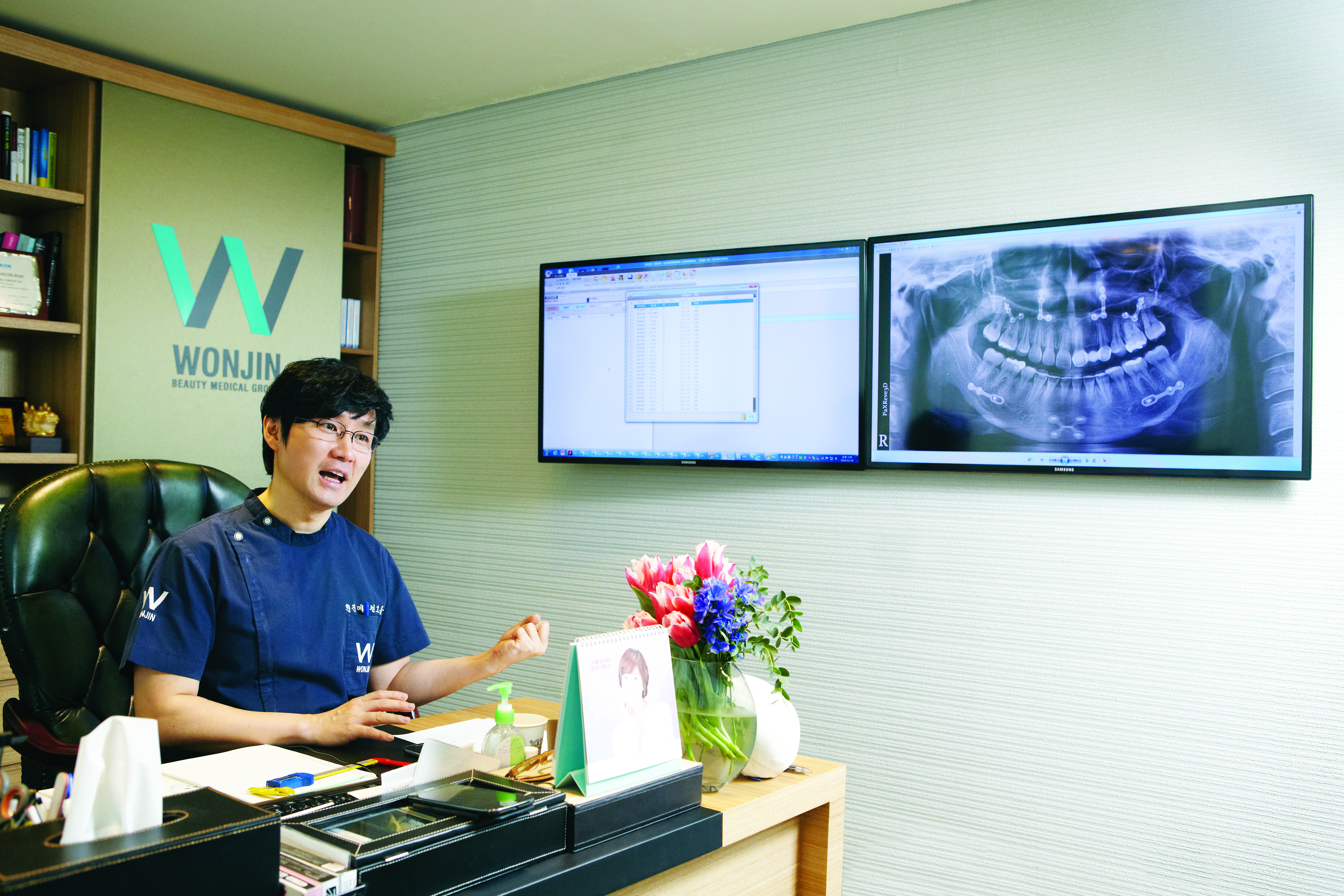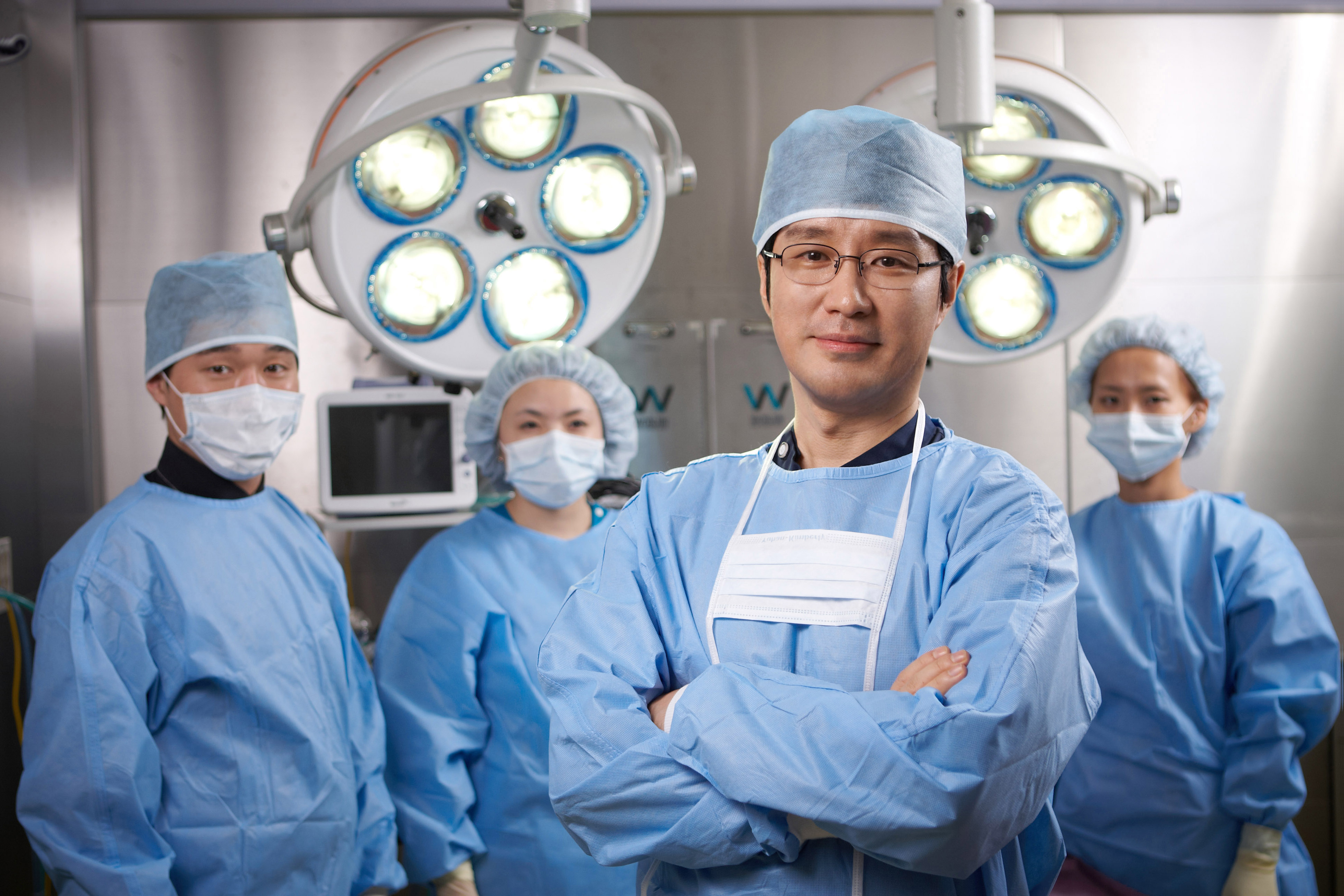Special Interview with Medical Directors of Wonjin Aesthetic Surgery Clinic and BK Plastic Surgery Hospital; two leaders of plastic surgery in Korea
The Present and Future of Korea’s Aesthetic Plastic Surgery
Wonjin Aesthetic Surgery Clinic and BK Plastic Surgery Hospital are two leading institutions of plastic surgery in Korea. They are shaping the plastic surgery trends in not only Korea but all over Asia. We discussed the newest developments and future directions of plastic surgery with Dr. Wonjin Park of Wonjin Plastic Surgery Clinic and Dr. Byung Gun Kim of BK Plastic Surgery Hospital.

Dr. Wonjin Park, Medical Director of Wonjin Aesthetic Surgery Clinic
“Our goal is to be the leader of innovations in aesthetic medicine, rather than becoming number 1.”
Wonjin Aesthetic Surgery Clinic is the largest private practice of plastic surgery in Asia. In the hospital ranking with the largest number of foreign patient visits announced by Korea Health Industry Development Institute, Wonjin Aesthetic Surgery Clinic was ranked 10th, the highest for a private practitioner. Since opening the office in Apgujeong, the fashion district of Seoul, in 1999, it took Dr. Park only 15 years to become the leading plastic surgeon in Korea and Asia.
[Advertisement] A-One LITE(Facial Diagnosys System) – Manufacturer: BOMTECH(www.bomtech.net)
However, Dr. Park is not always happy that his practice has become so prosperous. He may be excessively modest when he says he sometimes even regrets establishing such a large hospital with an impressive list of patients from all over the world.
“My original intention was to stay simple and have a rather ordinary career as a doctor. All I did was give my best to my day-to-day work. I never had a glamorous goal but did my work to the best of my ability. I feel as though I have come too far and have become an elm tree with too many branches. I wanted to establish a small but strong practice.”
In a sense, the success of Wonjin Plastic Surgery Clinic was a fortunate accident that Dr. Park did not foresee. Then, how did a small seedling grow into a big elm tree with rich foliage?
“As the income level rises, each country focuses on different goals. The French prioritize the importance of fine cuisine, Italians focus on design and craftsmanship whereas some countries get excited over soccer. When it came to Koreans, music, TV programs and physical beauty became the main preoccupation. The emphasis on physical beauty and the desire to achieve it became a sort of national zeal and provided the basic drive behind Hallyu, or Korean waves, that swept over the world. In the old days, any plastic surgeon opening private practice was guaranteed success. During those days, no one wanted to consolidate into a larger hospital. For a small practice to grow into a much larger hospital, it has to join forces with the less successful practices. From late 1999 to early 2000, successful plastic surgeons started to enlarge their practice and those with weaker business joined the large ones as a salaried doctors. We expected that a time of integration would come and invested heavily. But, we were not 100% sure of our prediction and thought we had 30% chance of succeeding.”
Focusing on better surgery outcome rather than marketing
As Dr. Park expected, plastic surgeons started to merge with each other to create multi-specialty plastic surgery centers which soon began to drive small private practices out of the market. Dr. Park was probably not alone in predicting the advent of large plastic surgery centers. However, not everyone who invested in growth succeeded in becoming the number 1 center. We asked him what the secret to his unique success was.
“My hospital does not believe in aggressive marketing. We believe providing good quality is the best marketing strategy. This is why my hospital appeals more strongly to foreigners than the domestic market. In Korea, advertising plays a key role in determining the success of the plastic surgeon. On the other hand, foreign patients who fly for hours to get the procedure done in Korea need to go back home with a good outcome because it is very difficult for them to come back to Korea. For these patients, revision surgeries are out of the question and my hospital was particularly appealing as we provided satisfactory outcome.”
Consolidation of plastic surgery practices has many benefits such as favorable market positioning, but also has disadvantages. It is difficult to manage a large number of doctors and staffs and respond quickly to a problem when it arises.
“What is inherent in a large hospital is the high cost structure, which means it has to earn high sales revenue to stay afloat. It also has less flexibility of price than a small scale plastic surgeon. Such a high-cost structure and price rigidity pose management risks. It is not easy to consistently bring excellent outcome in a large group. Quality control becomes more difficult in a hospital of 10-15 doctors. A hospital of this size generally does not have teaching staff and doctors are left to their own devices to master the necessary skills. An expanding hospital necessarily goes through this risky phase. My hospital divides doctors into 3-year, 5-year and 10-year experience groups and provide specialty training including observation and support, etc. The problem of this training program is the high cost. We cannot pay junior doctors a resident’s salary. This is a problem as we have to pay high salaries to trainee doctors who are not yet equipped to perform reliable procedures. But we cannot discard this system because we cannot give up our principle of quality management.”
If large hospitals do not market themselves, the whole market suffers
There has been a recent influx of Chinese patients visiting Korean plastic surgeons. Korean plastic surgeons are leading the so called “medical Hallyu” and Wonjin Aesthetic Surgery Clinic is at the very heart of it. However, no one knows how long this trend will continue. The popularity could wane and the Chinese patients may suddenly stop seeking Korean plastic surgeons.
“Only very recently, the number of Chinese patients have grown. This number started to gradually increase in 2007 and suddenly jumped in the last couple years. This coincides with the timing of relaxing the visa policy by the Korean government. Starting this time, the number of Chinese tourists increased and my hospital also saw a larger number of Chinese patients. I expect this influx of Chinese patients will last the next five years. I don’t know what will happen next. If we waive visa for Seoul as we did for Jeju Island, it could continue longer. The Korean waves in the field of medicine are intricately connected to the politics. When the Chinese doctors become more skilled, the number of Chinese patients coming to Korea will ultimately decline. This is why my hospital does not offer tutorial sessions to Chinese doctors. American doctors are generous with sharing their expertise with Korean doctors. This is because the practice of Korean doctors is far away from the US. It does not matter how good the Korean doctors are to the American patients. They will very rarely travel all the way to Korea for a medical procedure. But China is too close to Korea. If Chinese doctors offer quality medical service, we may lose even Korean patients to them.”
Large hospitals lead the industry trends. The aesthetic standards that a large number of patients demand at the big hospital and those offered by the hospital together create a common trend. If so, what are the most prominent trends now?
“Just as in fashion, what is considered physically beautiful goes through trends. These days, anyone visiting a plastic surgeon desires natural looks. They expect the outcome to be natural looking. The ‘natural yet improved look’ is the current trend. The trend changes every 3-5 years. People get tired with the same mass-produced look and look for more natural appearance but a few years later, go back to drastically changed looks. Another factor influencing the beauty trends is the celebrities. As designers lead the fashion trends, celebrities lead beauty trends.”
Lastly, we asked Dr. Park what his final goal was. Or, has it already been accomplished?
“Rather than focusing on becoming the number 1 hospital, I’d like to create a new field within aesthetic medicine. Anti-aging procedures make an important subfield in the aesthetic medicine. I’d like to play a unique role in aesthetic medicine.”
We also asked if he were to start over now, what kind of practice would he be interested.
“If I were to start over my practice, I would veer away from the multi-specialty hospital and rather manage a small plastic surgery office with one or two specialties and 5-7 staff members. I think it would be fun to keep it small yet very specialized so that it would not be affected by the ups and downs of the market. Going back to the earlier analogy of a tree, instead of an elm, I would like my practice to resemble a bamboo tree, with no branches but a strong stalk.”

Dr. Park explains, “the success of Wonjin Aesthetic Surgery Clinic in Korea and abroad is based on the firm principle of quality management.”

The tiered training system made quality control possible in a large hospital.

Dr. Park is a surgeon before a manager.
-To be continued-
by Yoo Inhong, D&PS Magazine




















